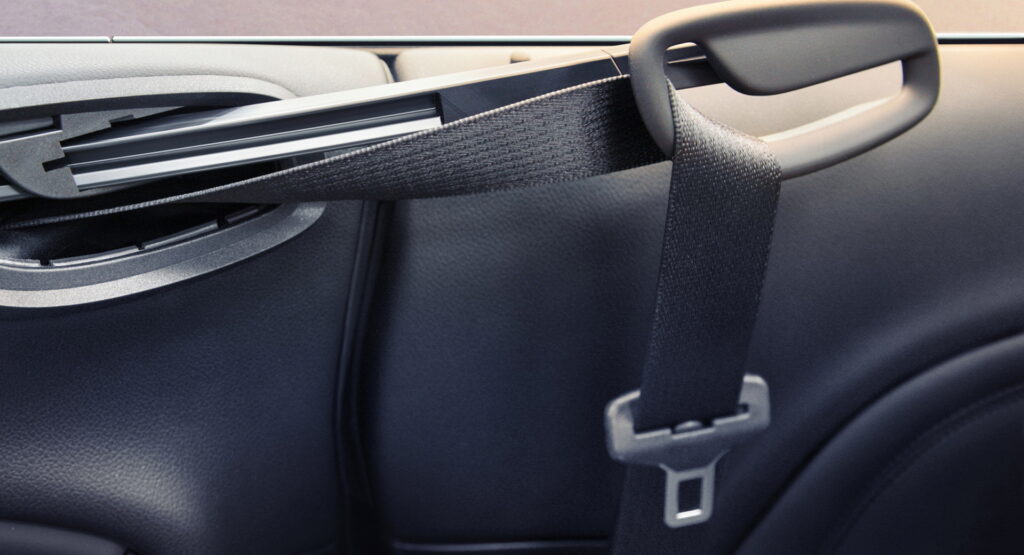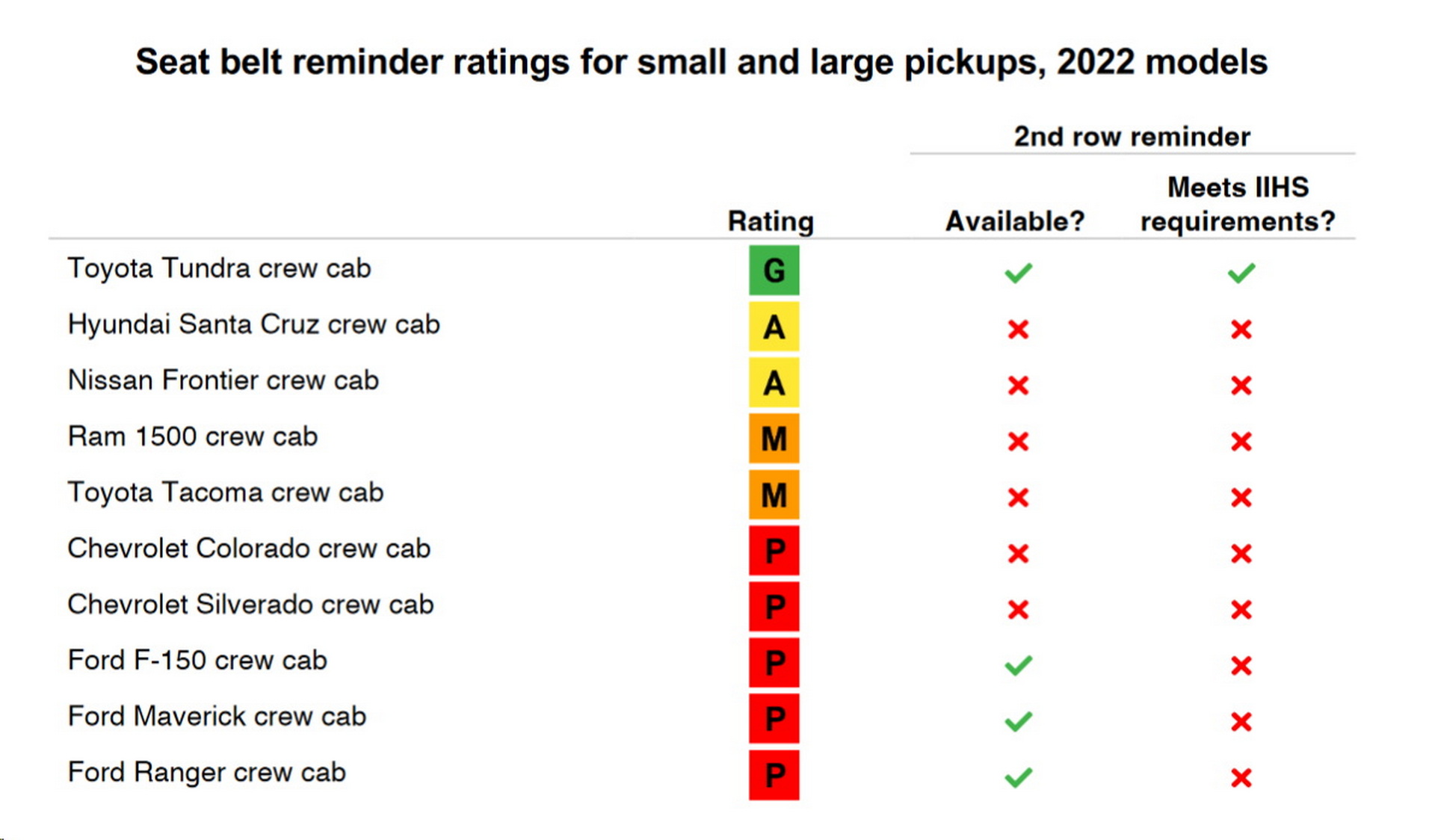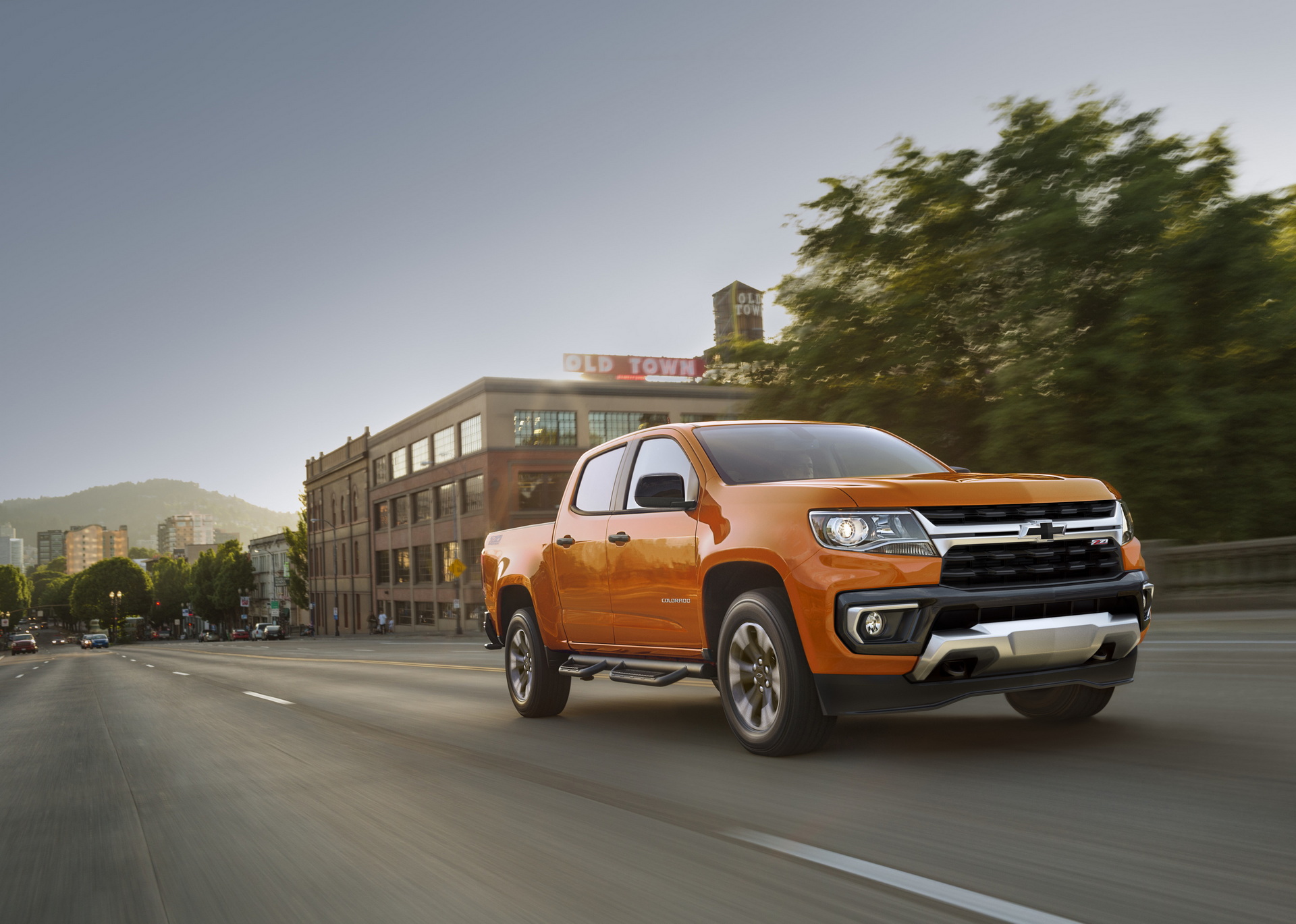The Insurance Institute for Highway Safety (IIHS) has found that just one of the 10 popular pickup trucks it recently tested satisfy its new requirements for seatbelt reminder warnings. That’s of particular importance in pickup trucks, whose occupants are less likely to buckle up.
Of the 10 mainstream, crew cab pickup trucks tested by the IIHS, only the Toyota Tundra met its new reminder requirements and earned a “Good” rating. In order to achieve that, a vehicle must generate an audible and a visual alert when the vehicle is moving at least 6 mph (10 km/h).
Along with other specifications, the alert that plays in a vehicle must be loud enough to be heard over the background noise in the vehicle, and must last at least 90 seconds. A visual cue must also show second-row seatbelt use when the driver starts the vehicle, and an audible reminder must play for 30 seconds if that passenger is unbelted.
Read More: IIHS Introduces Seat Belt Reminder Test, Only Two Models Manage To Get A “Good” Rating
Although all of the vehicles meet federal regulations for seatbelt reminders, five of the trucks rated poor in this test: the Chevrolet Colorado, Chevrolet Silverado, Ford F-150, Ford Maverick, and Ford Ranger. These mostly failed to impress the IIHS because their reminder were too quiet and lasted less than eight seconds.
Some were closer to achieving a good rating, as far as the IIHS is concerned. The Hyundai Santa Cruz and the Nissan Frontier both satisfied all of the safety organization’s requirements for front seat passengers, but neither had second-row reminders, and, therefore, earned “Acceptable” ratings.
This test is particularly important for pickup trucks because nearly a third of deaths in the vehicles in 2020 occurred in rollover crashes, in which the use of seatbelts is a major factor in survival. The drivers of these vehicles also aren’t great at wearing the safety device.
“National belt use observations show that people driving or riding in pickups are less likely to buckle up than occupants of other vehicles, so effective reminders are especially important for these vehicles,” says IIHS President David Harkey. “This is a solvable problem.”
Indeed, in previous research, the IIHS found that persistent and noticeable alerts could increase seatbelt usage by as much as 34 percent among those who do not routinely buckle up. That’s the equivalent of 1,500 lives saved per year.







